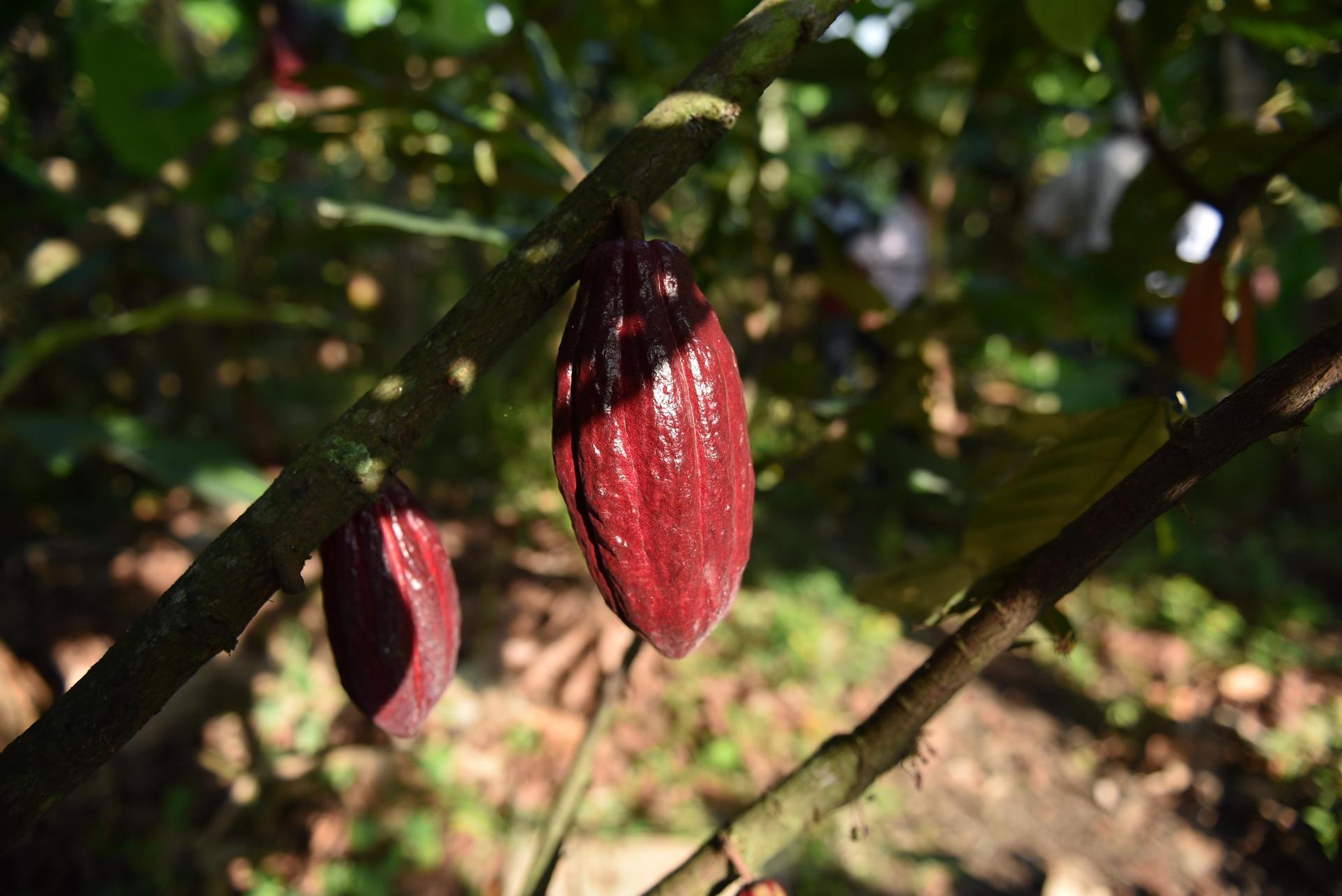Toward a standardization of Protocols and Trait Collection- Supported by The University of Reading (UoR)

Seeking High Temperature and Drought Tolerance in Cacao. A Knowledge Sharing Platform
An integrated approach to improving yield efficiency and resilience in the face of climate change through better use of cacao genetic resources.
Via partner consultations, and especially with the support of The University of Reading (UoR), the CFCE-CC team produced a rationalized list of traits, together with a list of specific equipment for standard measurement. This is extremely useful to help ensure standardization and consistency of terminology in any future work. Most of the traits can be measured using a simple ‘low tech’ method, requiring basic equipment, a few traits can only be measured with more sophisticated ‘higher tech’ equipment, and other traits, such as the example below can be measured using either a high-tech or a low-tech approach.
The protocols reference table is organised as follows:
i) trait category (growth/ morphological, yield component or physiological)
ii) trait label description
iii) materials/equipment needed
iv) bibliographical references to consult the specific measurement protocol(s)
v) associated abiotic stress response.
The following table in an example of the information provided to study Trait Protocols within the project. Click here to find the list of all traits.
Once the traits list had been agreed, led by the principal project investigator along with The University of Reading (UoR), the literature was searched, and stakeholders consulted to locate the most up-to-date method(s) used to measure each of the traits listed. Literature references are in the same document.
| Category | Trait | Description | Materials/Equipment |
| Growth parameter | Height and angles trees (Size of canopy at 90°) | Low Tech: Commonly used in the forestry. Using the principles of trigonometry, the height of tall tress can be calculated from the angles and distance measured. | Clinometer and measuring tape (Non-destructive method) |
| Growth parameter | Trunk/Stem Diameter |
Low tech: Stem increases: measured above ground level at 30 cm in mature/10 cm in young plants. In case of clones, measuring the main branches 30 cm above the ground basal area Low tech: Stem fluctations: coincident with plant water potential Low tech: Trunk cross‐sectional area (TCSA): from Trunk/Stem diamater, TCSA can be estimated (TCSA=π(d/4); where d= diameter). Increases in TCSA can be calculated using measurements through the time |
For stem increases: caliper for small plants or measuring tape for bigger ones. (Non-destructive method)
For stem fluctations: Dendometrer (Non-destructive method) |
| Yield Components Yield | Pod number, Pod Index, Bean Size, Bean Index |
Low Tech: Cocoa pods are counted for all trees seleceed. The yield of cocoa pods and beans is recorded including pod and bean fresh nd dry weight. The pod index is calculated as the number of pods required to obtain 1 kg of dry bean weight. The Bean Index is calculated as average of the dry weight of 100 seeds. |
Oven; balance ( Destructive method) |
| Components Yield | Pod biomass and bean quality | Low Tech: Reaching maturity, fresh and dry weights (after drying to constant mass at 70°C) of the fruit components (beans and husk) are recorded. Total percentage lipid content of the shelled, dried beans can be evaluated by means of acid hydrolysis | Oven (destructive method) |
| Components | Fruit Growth and Cherelle Wilt | Low Tech: Manual pollinations are made over the trees selected at different times during the season. To minimise possible confounding effects of fruit load, no more than three fruits are allowed to develop on any plant at a particular time. Weekly measurements of fruit length are recorded. Fruit losses through cherelle wilt ar also recorded | Measuring tape or digital calliper (Non-destructive method) |
| Physiological Responses | Osmotic Adjustment | High Tech: It has been recognized as an important mechanism for the drought tolerance of many crops. Phosphorus and Potassium accumulation in the cacao leaf are determine in laboratory. | Phosphorus and Potassium accumulation in the cacao leaf using colorimetry and spectrophotometry techniques respectively |
| Physiological Responses | Stomatal Conductance (gs) and Leaf Transpiration Rate (E) | High Tech: From leaf gas exchange measures, stomatal conductance (gs) and transpiration(E) can be estimated. The stomatal conductance determine the rate of leaf gas exchange (i.e. CO2 uptake) and transpiration through the leaf stomata. In fact, stomatal opening has been observed sensitive to water deficit and relative humidity | Porometer devices (Delta T, Cambridge); Portable Infrared Gas Analizer -IRGA (ADC BioScientific, Great Amwell, Herts, UK) |
